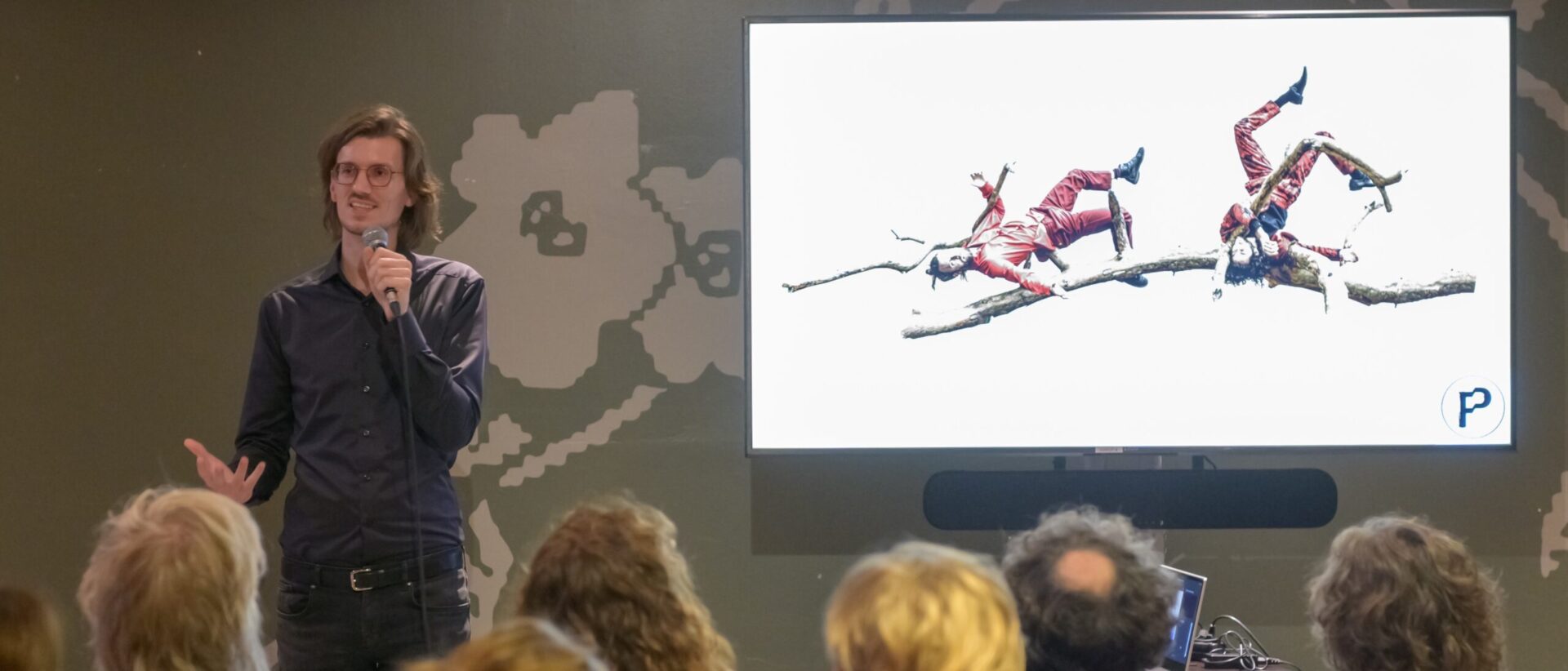How can I tell something about a performance without giving away what it is? That is the crucial question for dramaturge Guido Jansen every time he puts together his Sensory Colleges (Zintuiglijk Colleges). Since he is also involved in the artistic preliminary research of the Panama Pictures performances, he can draw widely on sources of inspiration. “I want to take the audience into the sensory experience,” he says.
He studied theatre, film and television studies, but Guido’s heart is mainly with dance. “As soon as an actor starts talking to me on stage, I drop out. Dance gives a completely different experience, is poetic, expressive. Without words. What that brings about fascinates me. I love to reflect on it. To discover and analyse what the creator intended.” A role as a dramaturge was therefore obvious, alongside his work as a teacher at the HKU’s theatre school. “Dramaturgy is a way of co-creation in which I can apply all that knowledge, experience and interest in media and art.”
Bridges to performance
Guido only knew Panama Pictures from one performance when he was asked if he could do the introductions there. “Panama Pictures’ work is about a certain way of experiencing rather than telling a unified story. So I wanted to approach those introductions differently. Not ‘dear people, this is what the maker is known for, you’re about to see this’, but taking the audience into the sensory experience. Letting them warm up a bit in advance, so they can relate themselves to the performance.”
And so he called his introduction Sensory College. There, with excerpts from films, visual art and audio, Guido highlights the themes and dynamics of the performance, shows how artists translated them into other forms. Vanishing Point, for example, is about getting older and what impermanence does to us. With a timelapse film of a woman growing up, I show that it is very difficult to pinpoint where that tipping point between young and old lies. With a poem by Jozef Deleu, about a son watching his ageing mother, I make the process of loss palpable. With examples and associations like these, as bridges to the performance, I invite visitors to look at it with a different focus and let it sink in.”
Quest for the core
Because Guido is also involved in the artistic preliminary research of each Panama Pictures performance, he can draw widely on sources of inspiration for his Sensory Lectures. “Such preliminary research always starts with an initial idea by Pia Meuthen, which we then analyse with all kinds of examples and phenomena with the same theme. These could be films, books, blogs, visual art. But also architecture or philosophy. During such a month-long search for the core, we get clearer and clearer what it is all about and what we want to show. Only when that is clear does Pia start working with the performers. And even then they often find new associations and images.”
Conversations with the public
The Sensory Lectures, however, will not take definite shape until much later. “I’m working on that until the very end. Often even into the week of editing. When I see the performance in its entirety for the first time and feel what it does to me, new examples spring to mind.”
And the interaction with visitors also regularly leads to new insights. “The name might suggest otherwise, but the Sensory Lectures are not lectures. They are conversations with the audience; I ask about their experiences with the subject matter, let them analyse and tell what they see. This creates an open dialogue. And make their own experience of the performance a little bit already.”
